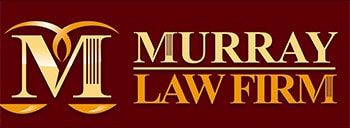Are you going through the divorce process and have a joint family trust? Learn the increase in value of separate property in this article!
This case involves the marital home located on a six acre tract (Tract 1) and an adjoining nine acre tract (Tract 2), denominated in the opinion as Richland Road. The home was the wife’s separate property as a result of a divorce from her first husband. Soon after the marriage, the parties, as trustors, executed a trust, prepared by an attorney, entitled the “Michael O. Murphy and Kyong S. Murphy Family Trust,” which they reserved the power to revoke or amend. They appointed themselves to be the trustees. If either died, the remaining original trustee would become the successor trustee, and upon his or her death, the wife’s daughter would become the trustee and the ultimate beneficiary. The husband and wife were the trust’s income beneficiaries, for whose primary purpose the trust was expressly created. They executed a quit claim deed which conveyed Tract 1 and Tract 2 to Husband and Wife as co-trustees of the family trust. The husband also transferred to the Family Trust his separate property, including a residential property in Bethany, Oklahoma, a subdivision lot in Oklahoma City, and a brokerage account.
 Three years later, the husband and wife decided to refinance Tract 1. As required by the lenders, the Co-Trustees of the Family Trust executed a warranty deed conveying only Tract 1 to themselves, as joint tenants with rights of survivorship. That same day, after they executed the loan documents and obtained the funds, they re-conveyed Tract 1 back to the Family Trust.
Three years later, the husband and wife decided to refinance Tract 1. As required by the lenders, the Co-Trustees of the Family Trust executed a warranty deed conveying only Tract 1 to themselves, as joint tenants with rights of survivorship. That same day, after they executed the loan documents and obtained the funds, they re-conveyed Tract 1 back to the Family Trust.
The trial court, relying on the second conveyance back to the family trust, determined that Tract 1 was marital property, as well as Tract 2. The wife appealed on this issue and the appellate panel affirmed, albeit on a different theory.
The court found two Supreme Court cases to be particularly instructive. First in Manhart v. Manhart, 1986 OK 12, 725 P.2d 1234, the court held that 43 O.S.§§ 204 and 205 allow spouses to contract with each other and alter their legal relations as to property by conveying jointly acquired property from the marital estate to the other spouse’s separate estate. “Whether the property remains the separate property of the spouse to whom it is conveyed, depends on how the spouses treat the property. If they jointly use and manage the property, then it may be considered ‘jointly acquired.’ The controlling facts in such cases are the time of the conveyance in relation to the separation of the spouses, and the completeness of their separation, especially in regard to their dealings concerning the conveyed property.” In Standefer v. Standefer, 2001 OK 37, 26 P.3d 104, the spouses negotiated a joint settlement to their separate tort claims, sought a joint cash payment and jointly-issued annuities, and deposited their annuity payments to their jointly-held account. The Supreme Court concluded that any separate interest each spouse had in their tort claims had lost its identity as separate property due to the commingling of their settlements.
In the Murphy case the court concluded that the entire marital home (both tracts) were marital property because, following the conveyance to the trust, the parties jointly used and managed the property, in particular they reserved to themselves the right revoke the trust and receive the income from the trust.
The appellate panel characterized the trust as a “joint trust” or “joint revocable trust.” Such trusts, the court noted, are an alternative estate planning technique which have become popular in common-law property states because they avoid probate and the need to sever jointly owned assets into separate trusts for each spouse.
The panel found that the case which most closely resembles this one is Bartlett v. Bartlett, 2006 OK CIV APP 112, 144 P.3d 173. That case involved a transfer of a husband’s separate property to his and his wife’s separate revocable trusts. In that case, the husband argued the property remained separate because he had created the separate trusts solely to reduce or avoid paying estate taxes. The court held that “[i]n determining whether placing an asset in joint tenancy for the purpose of avoiding estate taxes rebuts the gift presumption, the trial court must consider whether the donor had an intent to transfer a beneficial interest in the property before death.” Considering the husband’s transfers, the court in the Bartlett case, found that it was necessary that he give part of his separate property to make each trust nearly equal “in order to receive the benefit of his tax planning measures.” The Bartlett court then distinguished the purpose of avoiding estate taxes from the joint ownership required by the bank in Larman v. Larman, 1999 OK 83, 991 P.2d 536, finding “the joint ownership is required by the parties themselves, because they hoped to benefit from it on their deaths.” The Bartlett court determined there was no collateral purpose to the gift.
In Murphy, the wife’s intent to transfer a beneficial interest in the marital home “before death” was established by her conveyance of that property into a joint trust with a single trust estate comprised of the parties’ separate and jointly acquired property for which she and her husband were the income beneficiaries during their lifetimes. Based on the parties’ transfer of both Tract 1 and Tract 2 into the joint trust, and all the benefits they received from its creation, the panel concluded that the conveyances into the Family Trust was the functional equivalent of a transfer into joint tenancy. Therefore the trial court’s classification of the entire Richland Road property as marital was not clearly against the weight of the evidence.
The husband had also appealed, arguing that the trial court’s valuation of the home was against the weight of the evidence. As is the case with most such arguments, the appellate panel found that there was conflicting evidence in the record. Therefore the trial court’s determination of the question of fact had to be affirmed.
In addition, the husband appealed the trial court’s failure to conclude that the increase in the value of the wife’s separate property liquor store was marital. The appellate panel affirmed the trial court. In order to classify any increase in the value of separate property as marital, the non-owning spouse must show:
- The value of the property at the time of marriage
- The value at time of separation
- The marital cause of the increase, either labor or funds
In this case there was no evidence as to the value of the liquor store at the beginning of the marriage and therefore the trial court had to be affirmed.
The case is important for its conclusion concerning the use of family trusts. It also raises clear ethical questions for estate planners. It appears that attorneys engaging in estate planning should clearly explain to the married couple what is likely to happen to the property should the parties divorce. I expect that if married couples were aware of the consequences of divorce, as well as death, they might well not choose this particular estate planning device.
